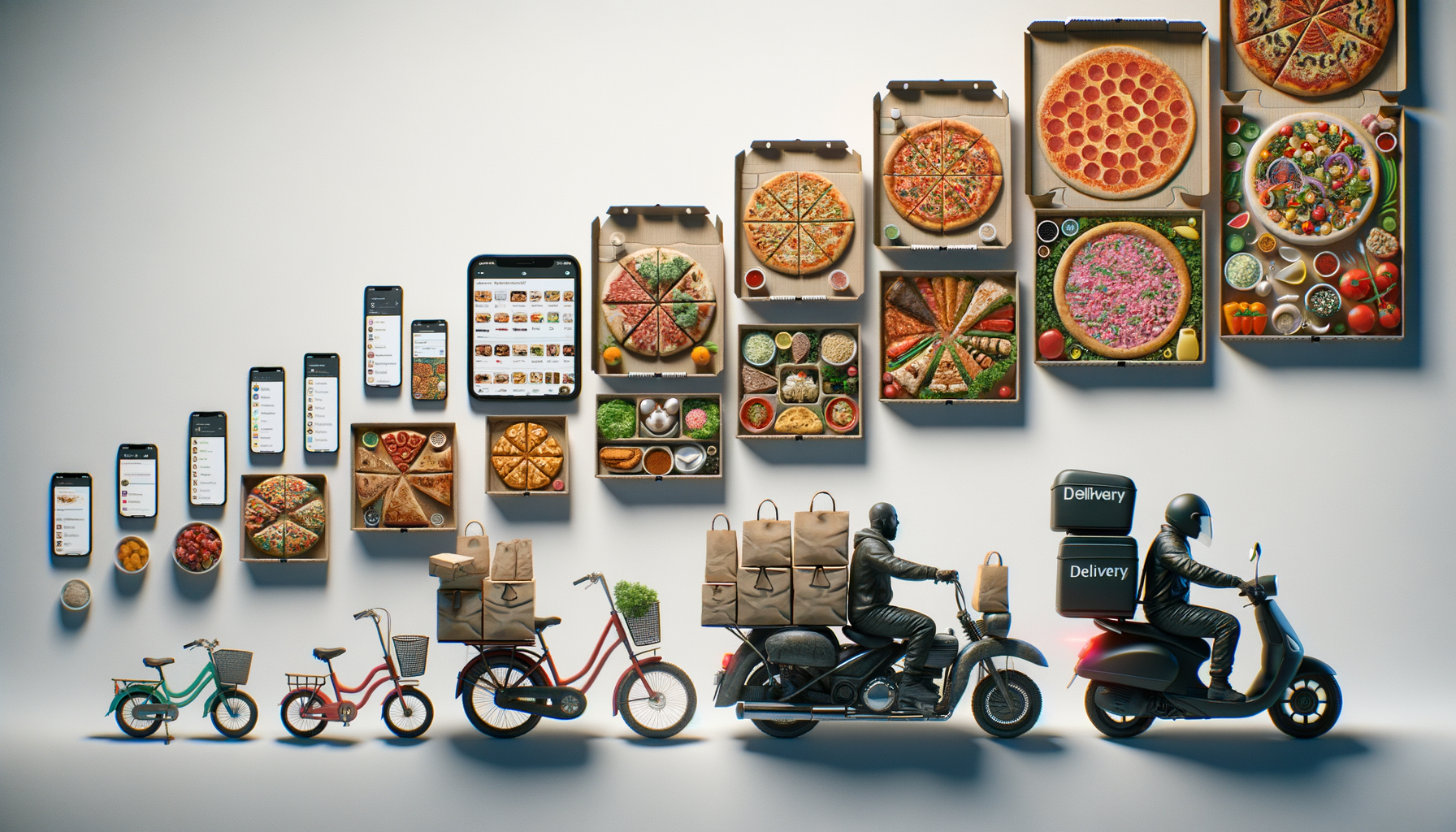The Birth of Food Delivery: From Necessity to Convenience
In the early days, food delivery was more of a necessity than a luxury. The concept began with simple meal services catering to those who couldn’t cook for themselves, such as the elderly or the infirm. Over time, the idea evolved, and by the mid-20th century, pizza delivery became a staple in many American households. The convenience of having a hot meal delivered to your door was revolutionary, setting the stage for a burgeoning industry.
Initially, delivery options were limited to a few cuisines, primarily those that could withstand travel without losing quality. However, as infrastructure improved and technology advanced, the variety of available cuisines expanded. The advent of the internet in the late 20th century marked a significant turning point, allowing customers to order food online with just a few clicks. This shift not only enhanced convenience but also increased accessibility, making food delivery a viable option for a broader audience.
Today, food delivery is not just about convenience; it’s a lifestyle choice. With the rise of mobile applications, people can now explore a plethora of dining options from the comfort of their homes. From gourmet meals to fast food, the choices are endless, reflecting the diverse palates and lifestyles of modern consumers.
The Digital Revolution: Transforming the Food Delivery Landscape
The digital revolution has dramatically transformed the food delivery landscape. With the proliferation of smartphones and mobile apps, ordering food has become more accessible than ever. Companies have developed user-friendly platforms that allow customers to browse menus, read reviews, and place orders with ease. This technological advancement has not only streamlined the ordering process but has also enhanced the overall customer experience.
One of the most significant impacts of the digital revolution is the introduction of real-time tracking. Customers can now track their orders from the restaurant to their doorstep, providing a sense of control and transparency that was previously unavailable. Furthermore, digital payment options have made transactions seamless, reducing the need for cash and enhancing security.
The digital age has also enabled businesses to gather and analyze data, allowing them to tailor their services to meet consumer demands more effectively. This data-driven approach has led to the emergence of personalized recommendations and targeted promotions, further enriching the customer experience and fostering brand loyalty.
Diverse Cuisines: Catering to Global Tastes
As food delivery services have evolved, so too has the variety of cuisines available to consumers. Today, it’s possible to order dishes from around the world, reflecting the diverse tastes and preferences of a globalized society. This diversity is a testament to the adaptability and innovation of the food delivery industry, which continuously seeks to meet the ever-changing demands of its customers.
From traditional Italian pasta to spicy Indian curries, the range of options is vast. This variety not only caters to different cultural preferences but also allows individuals to explore new culinary experiences without leaving their homes. The availability of diverse cuisines has also encouraged people to experiment with their diets, incorporating new flavors and ingredients into their meals.
Moreover, the rise of specialty diets, such as veganism and gluten-free, has prompted food delivery services to expand their offerings. Many platforms now feature dedicated sections for these diets, ensuring that everyone can find something that suits their needs. This inclusivity is a crucial aspect of the modern food delivery landscape, reflecting a broader societal shift towards health-conscious and ethical eating habits.
Adapting to Lifestyle Changes: The Rise of Health-Conscious Delivery Options
In recent years, there has been a growing demand for health-conscious food delivery options. As people become more aware of the importance of nutrition and wellness, food delivery services have adapted to offer healthier alternatives. From organic ingredients to calorie-counted meals, these options cater to individuals who prioritize their health without sacrificing convenience.
The rise of meal kit delivery services is a prime example of this trend. These services provide pre-portioned ingredients and recipes, allowing customers to prepare healthy meals at home with ease. This approach not only saves time but also reduces food waste, aligning with the values of environmentally conscious consumers.
Furthermore, many food delivery platforms now offer customizable meal plans, enabling customers to select meals based on their dietary preferences and fitness goals. This level of personalization reflects a broader trend towards individualized health and wellness solutions, demonstrating the industry’s commitment to meeting the unique needs of its customers.
Challenges and Opportunities: Navigating the Future of Food Delivery
While the food delivery industry has seen tremendous growth, it also faces several challenges. One of the primary concerns is sustainability. The environmental impact of packaging and transportation is significant, prompting companies to explore eco-friendly solutions. From biodegradable packaging to carbon-neutral delivery methods, there is a growing emphasis on reducing the industry’s ecological footprint.
Another challenge is maintaining food quality during transit. Ensuring that meals arrive fresh and in optimal condition is crucial for customer satisfaction. This has led to innovations in packaging and delivery technology, such as insulated bags and temperature-controlled vehicles.
Despite these challenges, the future of food delivery is bright, with numerous opportunities for growth and innovation. The integration of artificial intelligence and machine learning promises to further enhance the customer experience, offering personalized recommendations and efficient delivery routes. As the industry continues to evolve, it will undoubtedly adapt to meet the changing needs of consumers, reflecting the dynamic nature of modern society.




Leave a Reply